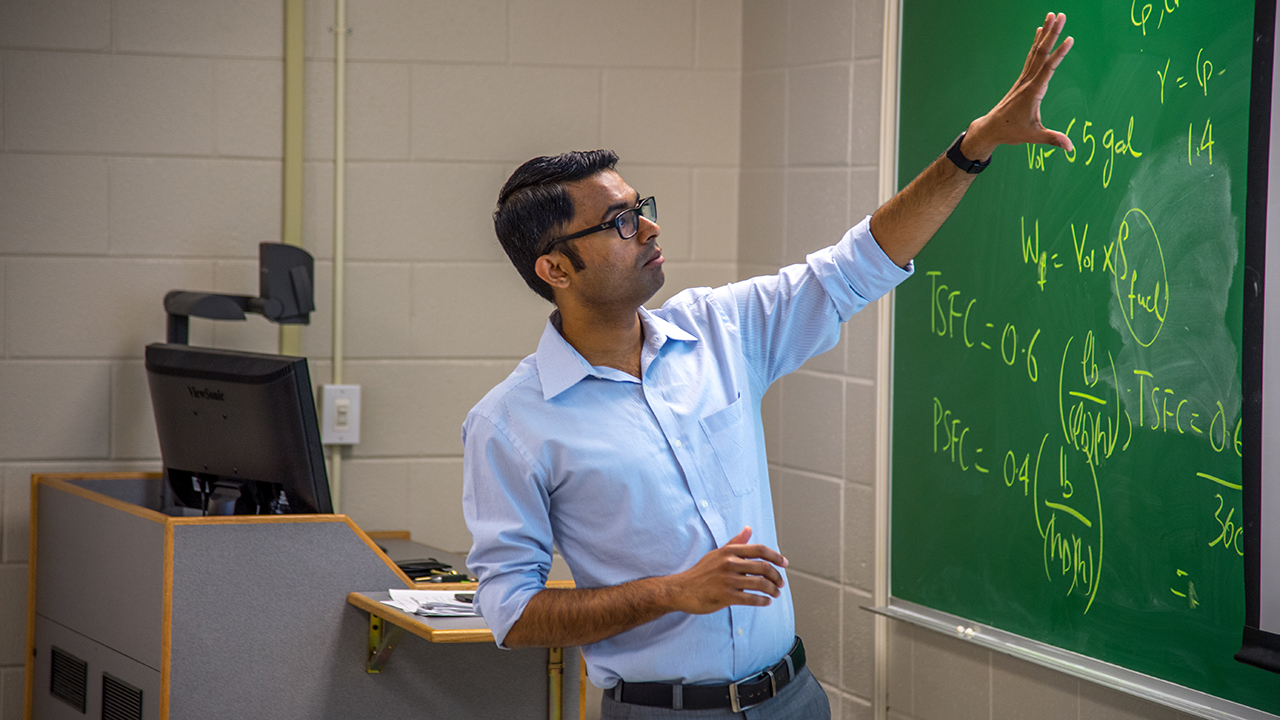Aerospace engineering assistant professor awarded Army grant to study helicopter performance
Published: Feb 4, 2019 3:00 PM
By Austin Phillips
Vrishank Raghav, an assistant professor in the Department of Aerospace Engineering, has been awarded a grant by the Army Research Office to help the military branch better understand dynamic stall that severely limits the performance envelope of current generation helicopters.
The three-year, $463,000 grant will fund research to study the phenomenon of dynamic stall that occurs on the rotating blades when excessively steep banks are entered or when very rapid maneuvers or sudden gusts of wind cause a blade to exceed the critical angle of attack. This flow condition is characterized by high unsteadiness, nonlinear interactions, turbulence, three-dimensionality and flow separation.
“This grant represents a major first step forward in Dr. Raghav’s efforts to establish an internationally renowned laboratory focused on the study of unsteady fluid dynamics for practical applications,” said Brian Thurow, chair of the Department of Aerospace Engineering and co-principal investigator on the project. “Dr. Raghav is quickly developing a reputation for coming up with creative and elegant solutions to understand complex problems that have challenged researchers for many years.”
Historically, the need for management of physical complexity has resulted in scientific approaches that eliminate potentially critical flow physics. While much progress has been made towards unraveling important details around dynamic stall, it has become apparent that revolutionary advances are unlikely if the full complexity of the physics is not considered.
An adequate understanding of such complex flows has eluded researchers thus far, due to the inability to measure 3-D flow on a rotating blade while simultaneously tracking the blade. For the first time, this project is developing and applying a novel approach — called Rotating 3-D Velocimetry (R3DV) — to simultaneously follow the rotating blade and measure 3-D flow features. This will be achieved by innovatively adopting plenoptic imaging technology developed by Thurow.
“This research will help us get one step closer to understand the true 3-D unsteady nature of the flow over rotating blades during dynamic stall,” Raghav said. “Such advances could be exploited to develop flow control concepts that could alleviate this problem and improve the speed and maneuverability of helicopters used in both civilian and military applications. This will also contribute towards reduced maintenance downtime and costs for the current generation helicopters.”
Media Contact: , adp0019@auburn.edu, 334-844-2444
Vrishank Raghav



